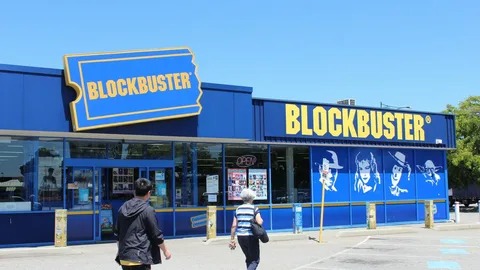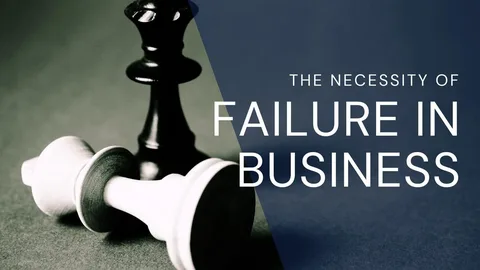Business failures are not merely negative outcomes; they provide invaluable lessons that can guide future entrepreneurs and established companies alike. This article explores several notable case studies of business failures, analyzing the root causes and the lessons learned from each incident. By understanding these failures, businesses can develop strategies to avoid similar pitfalls and foster resilience in the face of challenges.
1. Kodak: The Fall of a Giant
BackgroundKodak was once synonymous with photography, dominating the film market for decades. However, despite inventing the first digital camera in 1975, Kodak failed to adapt to the digital revolution, ultimately leading to its bankruptcy in 2012.Root Causes
- Complacency and Nostalgia: Kodak’s management was overly reliant on its successful film business and was hesitant to embrace digital technology, fearing it would cannibalize their core revenue stream.
- Failure to Innovate: Although Kodak developed groundbreaking technology, it failed to commercialize these innovations effectively. The company spread its resources too thin across various projects, diluting its focus on digital photography.
Lessons Learned
- Embrace Change: Companies must be willing to pivot and adapt to technological advancements, even if it threatens existing revenue streams.
- Focus on Core Competencies: Businesses should concentrate on their strengths and ensure that innovations align with their primary market focus.
2. Blockbuster: The Missed Opportunity
BackgroundBlockbuster was a leading video rental chain that failed to adapt to the changing landscape of digital streaming, ultimately leading to its decline and bankruptcy in 2010.Root Causes

- Ignoring Market Trends: Blockbuster underestimated the potential of online streaming and dismissed an acquisition offer from Netflix, which later became a dominant player in the industry.
- Rigid Business Model: The company maintained a traditional brick-and-mortar model, failing to innovate its service offerings in response to consumer preferences.
Lessons Learned
- Stay Ahead of Market Trends: Businesses must continuously monitor industry trends and consumer preferences to remain competitive.
- Adapt Business Models: Flexibility in business operations is crucial for survival in a rapidly changing market.
3. Sears: The Downfall of a Retail Icon
BackgroundOnce a titan of American retail, Sears struggled to compete with online retailers and filed for bankruptcy in 2018.Root Causes

- Failure to Innovate: Sears was slow to adopt e-commerce strategies, leading to a significant loss of market share to competitors like Amazon.
- Poor Management Decisions: The company made several strategic missteps, including excessive focus on cost-cutting rather than investment in innovation and customer experience.
Lessons Learned
- Invest in Technology: Retailers must embrace e-commerce and digital marketing to meet changing consumer expectations.
- Prioritize Customer Experience: Enhancing the customer journey is essential for retaining loyalty and driving sales.
4. Quibi: The Streaming Service that Flopped
BackgroundLaunched in 2020, Quibi aimed to revolutionize mobile streaming with short-form content. However, the platform shut down just six months later.Root Causes
- Misunderstanding Consumer Preferences: Quibi’s content was designed for on-the-go viewing, but the COVID-19 pandemic shifted consumer behavior towards longer, more immersive content at home.
- High Pricing: The subscription model was not appealing compared to free platforms like YouTube and TikTok.
Lessons Learned
- Understand Your Audience: Companies must conduct thorough market research to align products with consumer needs and behaviors.
- Adapt to External Factors: Businesses should be agile and responsive to unforeseen circumstances that can impact consumer behavior.
5. Yahoo: The Fall from Grace
BackgroundYahoo was once a leading internet company, but a series of poor management decisions and missed opportunities led to its decline.Root Causes

- Inconsistent Strategy: Yahoo struggled to define its identity, oscillating between a media and technology company without a clear focus.
- Failure to Compete: The company failed to innovate and keep up with competitors like Google, which dominated the search engine market.
Lessons Learned
- Maintain Strategic Focus: Companies should have a clear vision and strategy to guide their operations and decision-making.
- Innovate Continuously: Staying competitive requires ongoing innovation and adaptation to market changes.
6. JC Penney: The Retail Misstep
BackgroundJC Penney faced significant challenges in the retail sector, leading to its bankruptcy filing in 2020.Root Causes
- Failed Rebranding Efforts: The company’s attempt to rebrand and shift its pricing strategy alienated its core customer base.
- Inability to Compete: JC Penney struggled to compete with discount retailers and online shopping platforms.
Lessons Learned
- Know Your Customers: Understanding the target audience is crucial when implementing changes to branding or pricing strategies.
- Be Cautious with Rebranding: Major shifts in branding should be approached with careful consideration to avoid alienating existing customers.
7. Nokia: The Fall of a Mobile Giant
BackgroundNokia was once the leading mobile phone manufacturer but lost its market position due to its failure to adapt to the smartphone revolution.Root Causes
- Overconfidence in Brand Strength: Nokia underestimated the impact of competitors like Apple and Android, believing its brand would sustain its market position.
- Delayed Response to Market Changes: The company was slow to innovate and failed to develop a competitive smartphone strategy.
Lessons Learned
- Stay Humble and Vigilant: Companies should remain aware of competitors and market dynamics, regardless of past successes.
- Innovate Proactively: Businesses must prioritize innovation and be willing to pivot in response to technological advancements.
8. IL&FS: A Corporate Governance Failure
BackgroundInfrastructure Leasing & Financial Services (IL&FS) faced a liquidity crisis in 2018, leading to its insolvency.Root Causes
- Corporate Governance Failures: Poor management practices and a lack of transparency led to significant financial mismanagement.
- High Debt Burden: The company accumulated excessive debt without adequate risk management strategies.
Lessons Learned
- Robust Corporate Governance: Strong governance practices and transparency are essential for maintaining trust and credibility in the market.
- Financial Prudence: Companies must manage debt effectively and ensure they have contingency plans in place.
9. Cafe Coffee Day: The Impact of Personal Struggles
BackgroundCafe Coffee Day, a popular coffee chain in India, faced a financial crisis in 2019, exacerbated by the personal financial struggles of its founder.Root Causes
- High Debt Burden: The company struggled with significant debt and inadequate profitability.
- Inadequate Management: The founder’s personal issues impacted the company’s financial viability and operational efficiency.
Lessons Learned
- Diversification of Revenue Streams: Businesses should explore multiple revenue sources to mitigate risks associated with reliance on a single stream.
- Establish Contingency Plans: Organizations must prepare for unforeseen personal or operational challenges that could impact business stability.
10. Jet Airways: The Airline’s Downfall
BackgroundJet Airways, once a major player in the Indian aviation industry, ceased operations in 2019 due to financial difficulties.Root Causes
- Integration Challenges: The airline faced difficulties integrating operations after being acquired by a larger entity, leading to inefficiencies.
- Market Competition: Intense competition in the aviation sector contributed to mounting losses and operational challenges.
Lessons Learned
- Careful Integration Planning: When mergers and acquisitions occur, thorough planning and execution are critical to avoid operational disruptions.
- Continuous Monitoring: Regular assessment of business performance is essential to identify and address issues promptly.
Conclusion
The case studies of business failures provide critical insights into the challenges that companies face in today’s dynamic environment. By analyzing the root causes of these failures, businesses can learn valuable lessons about the importance of adaptability, innovation, and customer focus. Embracing these lessons can help organizations navigate challenges and achieve sustainable growth in an increasingly competitive landscape.
FAQs
Q1. What are the common reasons for business failures?
A1. Common reasons for business failures include poor management decisions, inability to adapt to market changes, lack of innovation, financial mismanagement, and failure to understand customer needs.
Q2. How can businesses learn from failures?
A2. Businesses can learn from failures by analyzing the root causes, identifying key lessons, and implementing strategies to avoid similar pitfalls in the future.
Q3. Are all business failures detrimental?Not necessarily. While business failures can be costly, they often A3. provide valuable insights and lessons that can lead to future success if organizations are willing to learn and adapt.
Q4. What role does corporate governance play in business success?
A4. Strong corporate governance is crucial for maintaining transparency, accountability, and ethical practices within a company, which can help prevent mismanagement and financial crises.
Q5. How important is customer feedback in preventing business failures?
A5. Customer feedback is vital as it helps businesses understand consumer needs, preferences, and pain points, enabling them to adapt their products and services accordingly to avoid failure.







